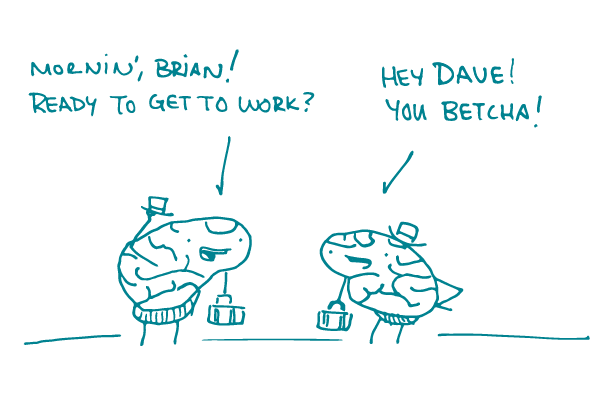
No doubt you know by now, dear readers, how important it is to keep your health content clear, simple, and direct so it’s easy for people with limited literacy skills (and everyone else) to understand. What you might not know is that cognitive scientists have an explanation for why some of our favorite plain language guidelines make such a big difference: something called working memory.
Working memory is the brain function responsible for storing, organizing, and using information. It’s where we keep facts and details, do equations, and form new thoughts — all key pieces of understanding written information. But our working memory only has a finite amount of storage space, and it’s “temporary storage” — like a scratchpad that’s only so big.
One thing we know about audiences with limited literacy skills is that they’re likely to have more issues with working memory than their higher-literacy counterparts. That makes them more likely to get distracted, reread words, or lose their place — and perhaps give up reading altogether.
So what’s the savvy health writer to do in order to keep readers, well, reading? Enter cognitive cues. Cognitive cues are strategies for designing and arranging content in ways that hold your reader’s attention. Think of them like visual signals that help emphasize important content — and minimize distracting content — to support readers’ working memory.
Check out these examples of some plain language standbys in the context of cognitive cues.
- Use boldface and other visual cues to call out key messages. This can help your readers find — and remember — the most important information on the page.
- Use images and graphics to support your text. Just steer clear of images that are off-topic or overly complicated — they can be more distracting than helpful.
- Give context first. Giving context at the beginning of a sentence helps readers know whether or not content applies to them, so they can skip it if it doesn’t — leaving a little more room in their working memory.
- Break paragraphs into small chunks or lists, and group similar information. Presenting content in small chunks or groups of like information — with lots of white space — is less likely to overwhelm a reader’s working memory.
- Replace jargon terms with plain language alternatives. Readers who struggle with working memory may have trouble remembering the meaning of a word they don’t know — even if you’ve defined at the beginning of the material.
Sure, you’ve heard us give tips like these before — but don’t they take on some new meaning now that they’re in context? We just ❤ that.
The bottom line: Use cognitive cues to create health content with your readers’ working memory in mind.
Browse recent posts